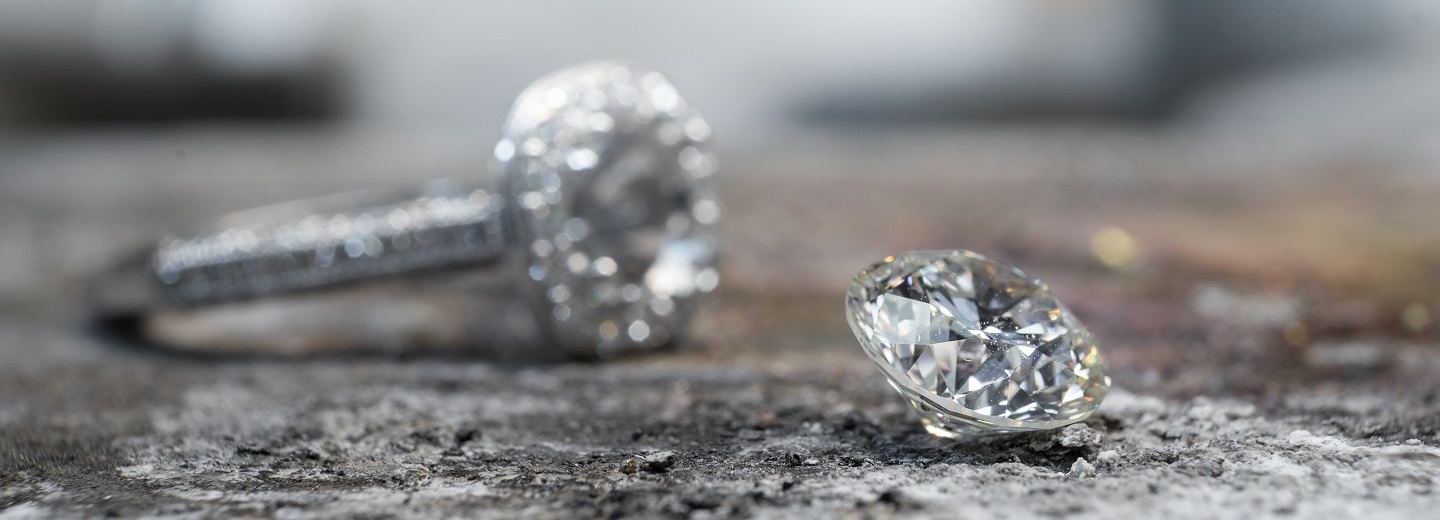DIAMOND BUYING GUIDE

What are the 4C’s of Diamond Quality?
The 4C’s - cut, color, clarity, and carat - refer to to the global standards set by the Gemological Institute of America (GIA). The creation of the 4C’s meant two very important things: diamond quality could be communicated in a universal language, and diamond buyers could now know exactly what they were about to purchase.
Color
In most diamonds, the term actually refers to the absence of color. The less color in the stone, the more desirable and valuable it is. Some of these differences are not visible to the naked eye, but directly impact the overall quality and price of the stone.
Clarity
Clarity measures the amount, size and placement of internal ‘inclusions,’ and external ‘blemishes.’ Grades run from ‘Flawless,’ with virtually no imperfections, to ‘Included,’ which contain a significant number of imperfections.
Cut
The cut does not refer to a diamond’s shape, but to the proportion and arrangement of its facets and the quality of workmanship. The amount of brilliance, sparkle and fire in a diamond is determined by cut. Grades range from ‘Excellent’ to ‘Poor.’
Carat
The carat refers to a diamond’s weight. Generally speaking, the higher the carat weight, the more expensive the stone. Two diamonds of equal carat weight, however, can have very different quality and price when the other three Cs are considered.
Anatomy
Diamond Shapes
Round Brilliant
Used frequently in earrings, pendants and solitaire engagement rings, round brilliant remains the most popular shape for diamonds. Virtually all round diamonds are brilliant-cut and for good reason. When cut as a round brilliant, the diamond’s angles help to enhance its fire and brilliance.
Square or Princess
This dynamic shape has the extraordinary ability to look either modern or vintage, and creates the illusion of a larger diamond. Most square-shaped diamonds will feature a princess or Quadrillion cut, and are quite popular engagement ring choices. When choosing a square diamond, make sure all sides are parallel, and choose a prong setting that will protect the corners.
Rectangle
Rectangular shapes come in a variety of cuts, including cushion, barion, and baguette. The Asscher and cushion cuts surged in popularity in the early 1900’s, making these ideal for those who prefer classic jewelry. Look for parallel sides and even corners with this shape.
Octagonal
You’ll often see octagonal-shaped diamonds with an emerald cut, the emblem of the Art Deco period. The rectangular table and step-cut facets give it a mirror-like appearance, which means that clarity will be an important quality for the diamond, since inclusions are highly visible.
Oval
Oval-shaped diamonds have a long history, dating back as early as 1304 with the famous Koh-i-Noor. Today, they’re making a strong comeback, and are a popular choice, particularly if you’d like your finger to appear longer and slimmer. Like round diamonds, ovals cut in the brilliant style exhibit a similar fire and brilliance.
Marquise
Named after a mistress of King Louis XV, whose mouth it was thought to resemble, this shape creates an illusion that the diamond is larger in size. Watch out of symmetry in marquise-shaped diamonds - even the slightest difference can make a diamond appear uneven and unbalanced.
Pear
Resembling a teardrop, the pear shape blends the best of the round and marquise shapes. Rounded shoulders and wings create an appealing outline, but symmetry is key for this shape. Wear the point out toward the tip of your fingers for a slimming effect on your hand.
Heart
This eternally romantic and feminine shape is not as prevalent as you might expect, making it all the more special. Heart-shaped diamonds should have two symmetrical halves with a distinct cleft and even wings and lobes. A perfect shape for Valentine’s Day.
Triangle or Trillion
Usually used a side stones, the triangle shape is a truly unique and adventurous choice for a solitaire. Most triangle-shaped diamonds are cut in the brilliant style, also called the trillion or trilliant cut. Inclusions tend to be easier to see with this shape, so look for a stone of high clarity.

